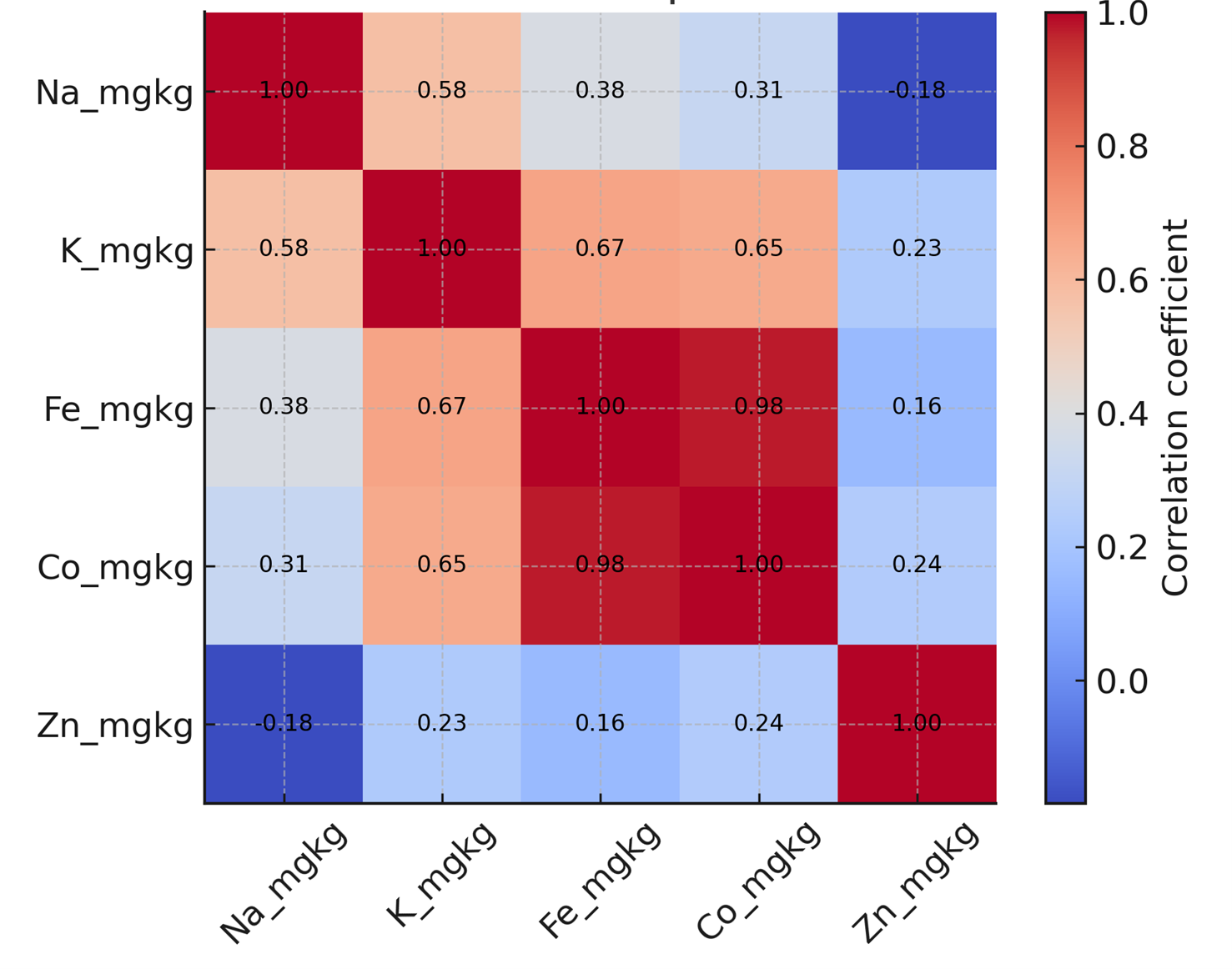The Use of Instrumental Neutron Activation Technique to quantify Na, K, Fe, Co, and Zn in Ajiwa Dam Sediments Employing a Miniature Neutron Source Reactor
Keywords:
Ajiwa Dam, INAA, trace elements, sediments, NIRR-1 reactor, radiological assessmentAbstract
Identifying and quantifying trace amounts of chemical elements in a sample particularly in sediments has helped researchers to understand their characteristics. This study investigates the elemental composition of five essential elements for plants growth and radiological significance of Ajiwa Dam sediments using Instrumental Neutron Activation Analysis (INAA) at the NIRR-1 Miniature Neutron Source Reactor (MNSR), Ahmadu Bello University, Zaria. Concentrations of Na, K, Fe, Co, and Zn were quantified in ten sediment samples collected from different locations around the dam randomly selected. The results show dominance of Fe and K, with mean concentrations of 19,811 mg/kg and 10,622 mg/kg respectively, followed by Na (1,400 mg/kg), Zn (43.3 mg/kg), and Co (4.9 mg/kg). Statistical analysis revealed moderate variation among elements (CV = 16–37%) and strong correlations between Fe–Co (r = 0.82) and Fe–Zn (r = 0.74), suggesting common lithogenic origins. Radiological evaluation based on potassium-40 (K-40) activity yielded an average absorbed dose rate of 4.2 nGy/h and an annual effective dose of 0.0051 mSv/year, well below the global average limit (0.07 mSv/year). The findings indicate that Ajiwa Dam sediments are geochemically natural and radiologically safe for aquatic life and human use.

Published
How to Cite
Issue
Section
How to Cite
Most read articles by the same author(s)
- Nasir Tijjani Sidi, Andrew Narcissus, Emmanuel Joseph, Outdoor Radiation and Health Risk Assessment Near Fuel Filling Stations , Nigerian Journal of Applied Physics: Vol. 2 No. 1 (2026): Nigerian Journal of Applied Physics - Vol. 2 No. 1
Similar Articles
- Aminu Ismaila, Yahaya Yamusa, Sunday A. Jonah, Ziyau Muhammad, Amadi Vincent Nnamdi, Determination of Epithermal Neutron Fluxes in the Cadmium-Lined Irradiation Channels of a Nuclear Reactor for Mineral Exploration , Nigerian Journal of Applied Physics: Vol. 1 No. 1 (2025): Nigerian Journal of Applied Physics - Vol. 1 No. 1
- Nasir Tijjani Sidi, Andrew Narcissus, Emmanuel Joseph, Outdoor Radiation and Health Risk Assessment Near Fuel Filling Stations , Nigerian Journal of Applied Physics: Vol. 2 No. 1 (2026): Nigerian Journal of Applied Physics - Vol. 2 No. 1
- Danladi H. Shalangwa, A. Z. Ngari, M. Alpha, Mujaheed Muhammad, Bilkisu A. Saeed, Assessment of Radiation Exposure in Chest And Abdomen: X-Ray Examination at Federal Teaching Hospital Gombe, Nigeria , Nigerian Journal of Applied Physics: Vol. 1 No. 1 (2025): Nigerian Journal of Applied Physics - Vol. 1 No. 1
- Adetomiwa Adebayo Alade, Sinmi Ayodeji Jones, Oluwatoyin Atilola Amao, Liman Mohammed, Assessment of Heavy Metal Contents and Associated Health Risks in Groundwater Samples Around Federal College of Animal Health and Production Technology, Ibadan, Nigeria Students' Residential Areas , Nigerian Journal of Applied Physics: Vol. 1 No. 1 (2025): Nigerian Journal of Applied Physics - Vol. 1 No. 1
- Chukwunwike Ossai, Samuel Emuvokeraye Omoyibo, Adrain Ohwofosirai, GSM Signal Strength Measurement in Kwale Delta State Nigeria , Nigerian Journal of Applied Physics: Vol. 1 No. 1 (2025): Nigerian Journal of Applied Physics - Vol. 1 No. 1
- Sylvester Jande Gemanam, Peter Ahime Yongo, Stephanie Avar-Tsue, Barnabas Achakpa Ikyo, Nursakinah Suardi, Damilola Oluwafemi Samson, Innovative Enhancement of Zinc Oxide Nanoparticles (ZnO-NPs) Toxicity for Effective Weevils Control , Nigerian Journal of Applied Physics: Vol. 1 No. 1 (2025): Nigerian Journal of Applied Physics - Vol. 1 No. 1
You may also start an advanced similarity search for this article.




